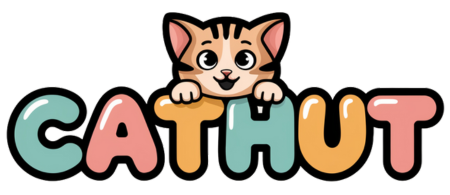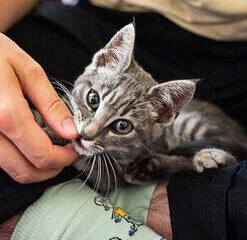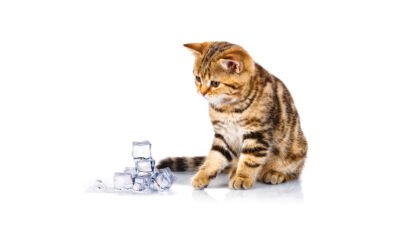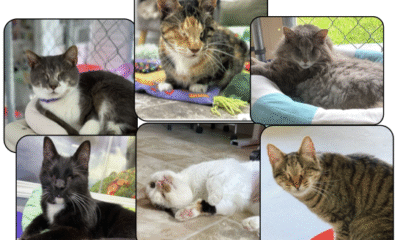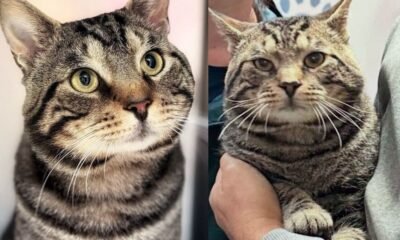Cat Nutrition
Common toxins related to vacations to cats
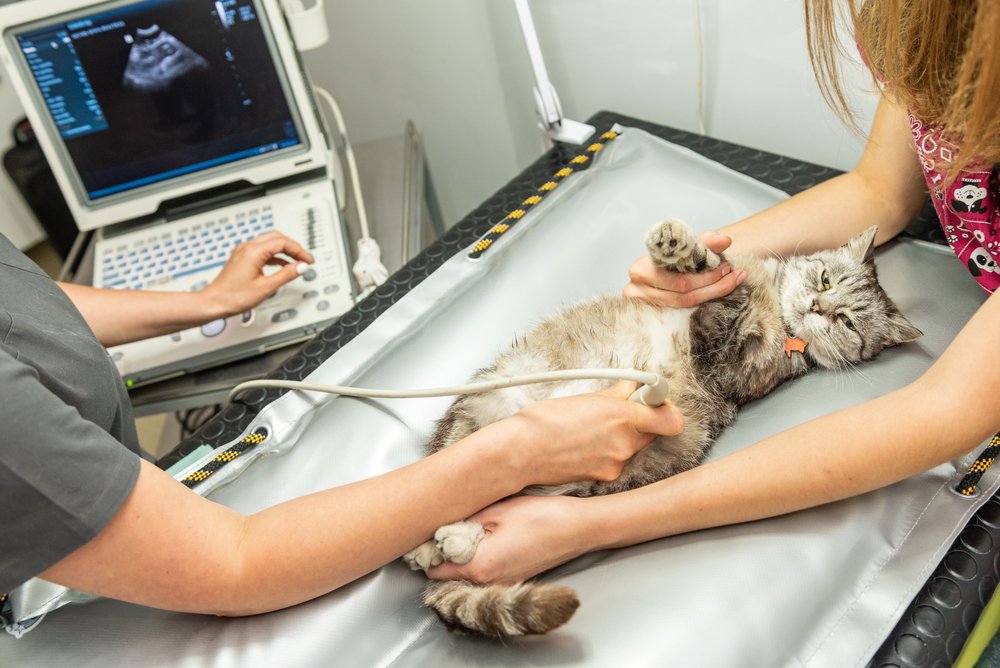

December 22, 2024 2:22 pm
The holiday season is a moment of joy, family gatherings and festive decorations. However, it also presents some hidden dangers for your feline friends. While it can focus on fun and festivities, certain Christmas items pose significant risks to your cat’s health. From decorations to food, these apparently harmless Christmas elements can be toxic or dangerous for cats. In this blog, we will explore some of the toxins related to the most common vacations to cats and offer advice on how to keep your cat safe during the holiday season.
1. Toxic foods for vacations during holidays
One of the greatest dangers during vacation is food. Many Christmas dishes and sweets are not only insecure, but they can be mortal for cats. It is important to be aware of what is in your dining table and how to prevent your cat from accessing dangerous foods.
Chocolate
Chocolate is one of the best known Christmas toxins for cats. While it is a popular gift for humans, it contains theobromine, a substance that is toxic to cats. Even small amounts of chocolate can cause symptoms such as vomiting, diarrhea, fast breathing and seizures in cats. Black chocolate is especially dangerous because it contains higher levels of theobromine.
Alcohol
Alcoholic beverages are commonly enjoyed during the holidays, but they are incredibly dangerous for cats. Even a small sip can cause severe poisoning. Alcohol can lead to vomiting, lethargy, tremors and in severe cases, coma or death. Be sure to keep all alcoholic beverages out of reach of your pets.
Onions, garlic and leeks
Many Christmas meals contain ingredients such as onions, garlic and leeks, which belong to the Allium family. These vegetables are toxic to cats and can cause gastrointestinal discomfort and damage to their red blood cells. Over time, ingestion can lead to anemia, making your weak and lethargic cat.
Grapes and raisins
Although they are often used in baking or Christmas snacks, grapes and raisins are highly toxic to cats. Even small amounts can cause kidney failure. Poisoning symptoms include vomiting, diarrhea, loss of appetite and lethargy. It is better to avoid leaving these fruits unattended around your cat.
Xilitol
Xilitol is a sugar substitute that is commonly found in Christmas treats such as sugar -free gum, sweets and baked products. While it is safe for humans, xylitol is extremely toxic to cats and can cause a quick drop in blood sugar levels, leading to symptoms such as vomiting, loss of coordination, seizures and even liver insufficiency.
2. Christmas plants that are dangerous for cats
Christmas plants are often used to add festive joy to their home, but some of them can be harmful or even mortal for cats if they are ingested. Many of these plants are basic in Christmas decoration, so it is essential to be aware of their potential hazards.
Poinsettias
Poinsettias are a popular vacation plant known to its bright red and green leaves. While they are not as toxic as other Christmas plants, they can cause mild symptoms in cats if they are ingested. These symptoms include baboo, vomiting and mild irritation in the mouth and stomach. Keep these plants out of your cat’s reach to avoid any discomfort.
Mistletoe
The Merdago, a traditional plant used for vacation decoration, contains compounds that can be toxic to cats. If your chewed cat in Merdago, it can cause gastrointestinal discomfort, including vomiting and diarrhea. In more severe cases, sober poisoning can lead to cardiovascular problems or seizures.
Holly
Bays, leaves and holly stems contain cyanogenic saponins and glycosides, which are toxic to cats. Eating Holly can cause vomiting, diarrhea and a decrease in appetite. The larger amounts can cause more serious symptoms, such as tremors or even organic insufficiency, so it is essential to keep this floor away from your cat.
Amaryllis
The Amaryllis flowers, often associated with the winter season, are beautiful but dangerous for cats. If they are ingested, bulbs, leaves and flowers can cause symptoms such as baboo, vomiting and diarrhea. While cats are unlikely to ingest large quantities, it is still important to keep this plant out of reach.
3. Christmas decorations that can damage cats
Christmas decorations make the season shine, but they can also present risks to their feline partner. Many decorations, if they chew or swallow, can cause serious damage to cats.
Tinsel and tapes
The torque and tapes are commonly used to decorate Christmas trees and gifts, but can represent a serious risk for cats. If they are ingested, these brilliant decorations can get stuck in your cat’s digestive system, which can cause a potentially deadly condition called linear obstruction of foreign body. This can lead to vomiting, loss of appetite and sometimes requires emergency surgery to eliminate the material.
Ornaments
Glass ornaments are a basic element in most Christmas trees, but can be easily broken if an inquisitive cat knocked out. The sharp fragments can cause cuts or internal injuries if your cat swallows them. Even ornaments that are not made of glass can be dangerous if they are small enough to be swallowed, which leads to suffocation or digestive blocks.
Electric lights
Rope lights are a beautiful way to illuminate their home during the holidays, but they come with their own set of risks. Cats, especially curious kittens, can try to chew cables, risking electrocution. Always check the lights to obtain frayed or exposed cables before hanging them, and make sure that your cat does not have access to them.
Scented candles
Scented candles are popular in Christmas decoration, but can be harmful to multiple ways. Cats can tear down candles, causing burns or fires. In addition, some candles contain toxic ingredients or essential oils that can cause respiratory problems or skin irritation if your cat comes into contact with them.
4. The importance of safe Christmas spaces for cats
While the holiday season brings many joys, it is important to remember that not all moments are safe for your cat. With the guests who come and go, changes in the environment and new smells and places of interest, it is easy for your cat to stress. Creating a safe and quiet space where your cat can retire is essential for your well -being during this occupied season.
Safe hiding places
Make sure your cat has access to a quiet space away from the chaos of Christmas celebrations. An area designated with bedding and family toys can help your cat feel safe. This space must be free of any Christmas decoration or food that can damage them.
Handle stress and anxiety
The noise and movement of festive guests can be overwhelming for many cats. Some may be anxious or stressed during festivities, which leads to behavioral problems or even health problems. To minimize anxiety, try to maintain your cat’s routine as normal as possible and consider using soothing products such as pheromone diffusers or soothing candy.
Supervision during meetings
If you are organizing meetings, watch your cat closely to make sure you have no risk of vacation. Cats can be tempted to explore new foods, decorations or unknown environments. It is crucial to maintain potentially harmful items out of reach and supervise their interactions with guests.
5. What to do if you suspect your cat has ingested something toxic
If you suspect that your cat has ingested a toxic substance, it is important to act quickly. Some toxins can cause serious or even fatal damage if they are not immediately approached.
Contact an immediate veterinarian
If your cat has ingested something potentially dangerous, communicate with your veterinarian or an emergency animal clinic immediately. Time is the essence, and the faster you can get your cat the help you need, the better the possibilities of a complete recovery will be.
Avoid trying to treat cat at home
Do not try to treat your cat at home unless a professional indicates it. Some treatments may worsen the situation or cause additional damage. Always follow the advice of your veterinarian.
Conclusion
The Christmas season is a time for the celebration, but it is also a time to be attentive to the potential risks for its pets. Understanding toxins related to the most common vacations for cats and how to prevent exposure is key to ensure that your cat remains safe and healthy during festivities. Being aware of toxic foods, dangerous plants and dangerous decorations, you can enjoy a holiday season without worries with your feline friend.
Do you need a cat veterinarian in Alexandria, goes?
Welcome to Kingstowne Cat Clinic! Kingstowne Cat Clinic is a local property CAT clinic centered on the community. We specialize in giving your feline friend the attention they need. We offer well -being exams, surgery, dentistry, vaccines and acupuncture. We also provide sedated preparation and in the euthanasia home. Kingstowne Cat Clinic is dedicated to providing quality medical and surgical care for all cats. Contact us Today for an appointment!
Categorized in: Cat Health, Cat Tips
This publication was written by admin
Cat Nutrition
Penalty poisoning risks: Accidental ingestion of increasing human medicines | Animal Welfare Magazine
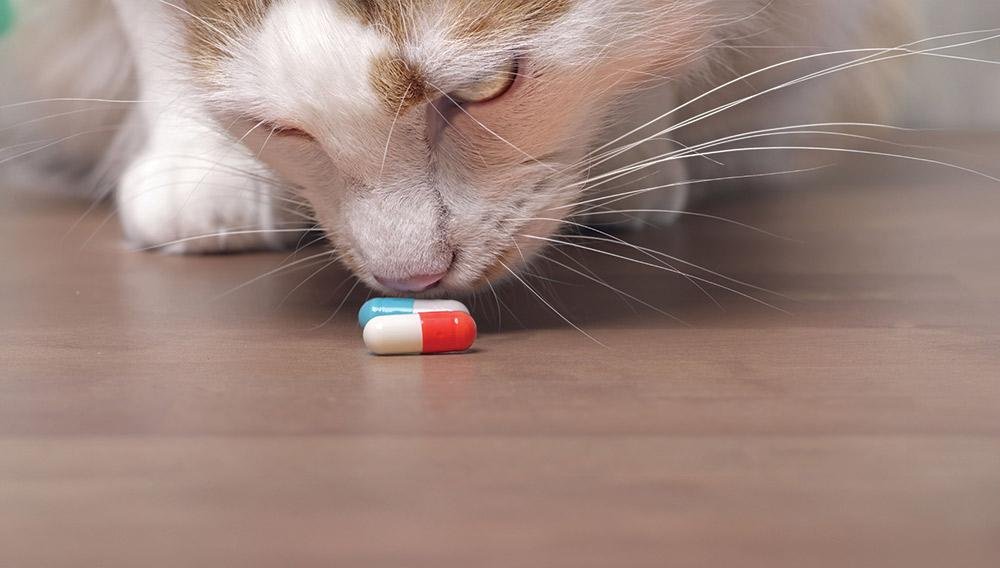
It addresses the parents of dogs and cats that take medications for depression, anxiety or aggregate/ADHD. Calls to the venom aid line for pets involving accidental exhibitions to antidepressants and antianxiety medications increased by 84.9% between 2019 and 2022. Then only 3.2% fell in 2023.
Toxicology experts in the pet aid line reported an 81.2% increase in calls on ADD/ADHD medications during the same period of time. There was a small 1% drop in 2023. In short, the accidental ingestion of human medicines, including those of ADD/ADHD and depression, increased more than 80% during this five -year period.
“The use and public discussion about this type of medicines has increased over the years, which has helped many people improve their quality of life,” said Dr. Renee Schmid, veterinary toxicologist and director of Veterinary Medicine in the Pet Pot Pot Pot help line. “In addition, according to a recent study, the antidepressant rate dispensed to young people increased dramatically during COVID-19 pandemic.”
Toxicology experts of the pet venom help line used their Toxins Tool for analyzing data from calls that involve accidental exhibitions to these medications. The analysis revealed that Texas had the largest number of ADD/ADD/ADD exposure calls related from 2019 to 2023, closely followed by California and Florida.
“Regardless of the state you live in, mental health medicines can have fatal consequences when animals ingest,” said Dr. Schmid. “Changes in cardiovascular and nervous systems are the main areas of concern. Specific symptoms vary according to the ingested medication.
“The increase in calls involving antidepressants illustrates the danger that pets have access to the medication of their human partner,” he added. Therefore, it is crucial to maintain all antidepressants and other recipes out of reach of your dog or cat to avoid accidental ingestion of human medications.
Publication views: 201
Animal Wellness is the Journal of Health and Natural Lifestyle of North America for dogs and cats, with a reader of more than one million every year. AW presents articles by some of the most recognized experts in the pet industry, with topics ranging from diet and health issues, to articles on training, physical state and emotional well -being.
!function(f,b,e,v,n,t,s){if(f.fbq)return;n=f.fbq=function(){n.callMethod?
n.callMethod.apply(n,arguments):n.queue.push(arguments)};if(!f._fbq)f._fbq=n;
n.push=n;n.loaded=!0;n.version=’2.0′;n.queue=();t=b.createElement(e);t.async=!0;
t.src=v;s=b.getElementsByTagName(e)(0);s.parentNode.insertBefore(t,s)}(window,
document,’script’,’
Cat Nutrition
7 Reasons to buy natural cat bunk – Cats.com
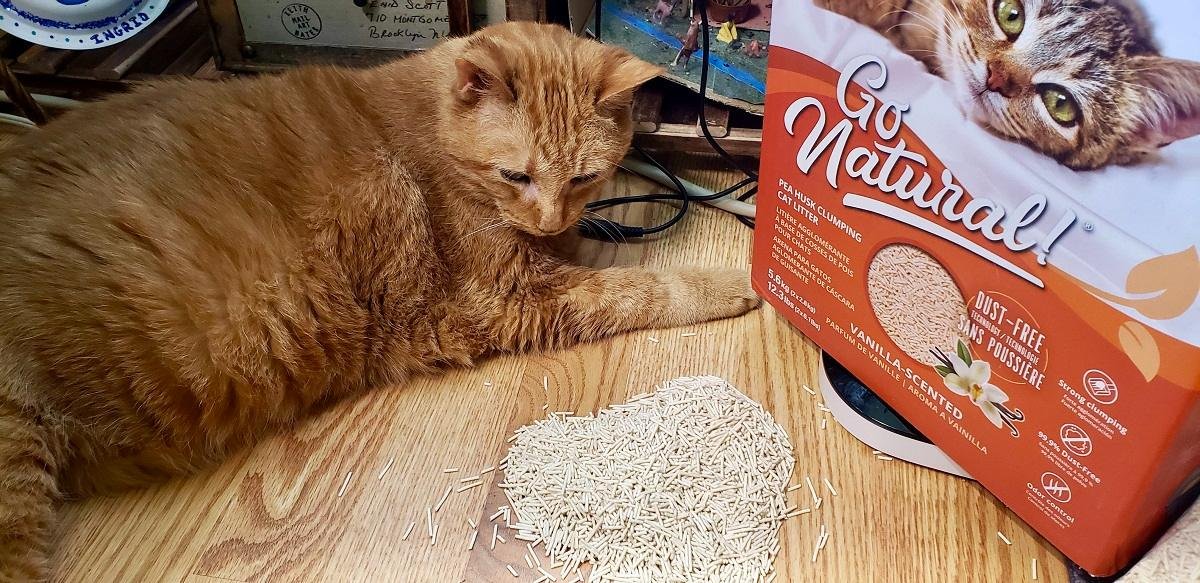
Liz Coleman / Cats.com
As consumers seek to minimize their carbon footprint, natural cat sand is having their day, a movement that we can support. Unfortunately, there is a lot of wrong information about natural garbage. We are here to clarify the confusion and highlight their strengths, weaknesses and who will benefit more.
To clarify, when we refer to “natural” garbage in the pet industry, we refer to garbage made of organic materials that break down more easily than traditional clay. While clay garbage is obtained from the earth and can be considered technically “natural”, it is not the most ecological option. Natural litters are made with renewable resources such as wood, corn and recycled paper. Not only are they better for the planet, but they also offer practical benefits for cat parents.
Are you not sure if natural garbage is for you? Next, we will present the main benefits, and frankly we will call common inconveniences. Here are seven reasons to consider sustainable garbage, such as Catit’s Go Natural Pea Husk Litter.
1. is better for the environment

Liz Coleman / Cats.com
Natural Cat Litter offers a clear environmental advantage, both in terms of production and its disposition.
While the bentonite clay is extracted through strips mining, a destructive process that harms ecosystems, natural litters are made of renewable resources such as wheat, soybeans and recycled paper.
These materials often come from administered practices sustainably. For example, wood -based litters are derived from harvested forests responsible, and Tofu -based products use leftover remains. Catit’s Natural Litter Upcycles Post-Consumer Materials that would otherwise be discarded, including peas and bamboo peels.
Many natural brands also focus on ecological packaging. Catit, for example, presents recyclable cardboard boxes and vacuum bags that save space and reduce CO2 emissions during transport.
When it is time to replace garbage, natural options are biodegradable and break down over time, reducing waste in landfills.
2. It is healthier for cats
Clay garbage often contains harmful chemicals, dyes and fragrances. Natural litters, on the other hand, are generally made of non -toxic foods of food degree. These are softer in the lungs, skin and even your cat’s belly, if you try a bite.
Instead of trusting hard additives to combat the smell, natural litters include materials that naturally absorb and neutralize odors. They also incorporate ecological accessories, such as sodium bicarbonate, to handle odors.
In addition, natural garbage tends to produce less dust, which is better for cats with asthma or allergies, as well as sensitive humans. Changing to natural garbage can make everyone at home, in account or of another, a little easier.
While natural garbage is generally safer, two potential health dangers to observe are pests and mold. If it is not stored correctly, natural litters such as corn and wheat can be susceptible to these problems.
3. It is (usually) less disorder than clay

Liz Coleman / Cats.com
When it comes to cleaning, natural garbage has an edge on clay. In general, natural materials produce less dust, and any generated dust is safer to breathe than small clay particles.
Some natural formulas, such as the garbage of the Catit pea peel, are designed on purpose with larger granules that track less, keeping the garbage inside the box instead of their floors. However, you will also find natural litters that are light and come in fine granules. These can actually lead to more disorder than clay.
Something to consider: although they generally do not include artificial fragrances, some natural litters will have a different smell under their ingredients. (that is, pine pellets will smell wood and the tofu has a decidedly sweet smell). We recommend choosing something what I can live with.
4. Natural litters often exceed clay
Natural litters can have a bad reputation for being ineffective, but some brands can overcome clay in key areas. I have tried a variety of litters over the years, and I have discovered that many natural options are grouped and control better than some economic clay litters.
That said, experiences will vary. Not all natural options are equally working. Each material has different strengths and weaknesses, and there are compensation with any garbage.
Pine, for example, is highly absorbent, and corn tends to group well. In the tests, we learned the garbage of the Catit peas shell, such as other similar litters based on Tofu, admirably administered. However, paper granules need more frequent changes and generally have mediocre smell control.
5. Easier disposal
Natural garbage is often biodegradable, which means that you can compose it or use it as a mulch for your garden. This ecological approach helps reduce waste. Both the garbage of the Catit pea peel and the ultra light litter are compostable; Just remember to eliminate dirty groups first to avoid the spread of pathogens.
In contrast, clay garbage takes a long time to break down and can sit on landfills for years. It is also heavier, which makes the elimination more difficult.
A natural sand is even downloadable, although it must ensure that your plumbing can handle it and that local ordinances allow it.
6. It is light and easy to manage

Liz Coleman / Cats.com
Unlike heavy clay, which can make changes in the sand box feel like training, many natural options are easy to raise, carry and pour. This is ideal for those who live in high -height apartments or for anyone who finds heavy bags difficult to handle.
With a light natural length, it is not only easier to hang the sand tray, but to change the complete box becomes a simpler task. Whether you have mobility problems or simply prefer a lighter option, change to natural garbage can lighten your load.
7. It is softer than clay
Most natural litters offer a more gentle touch compared to clay, which can be rough in delicate legs. Materials such as corn and pine are soft. They can make the sand box more comfortable for cats with sensitive feet or joint problems. This additional comfort could mean the difference between your cat voluntarily using the box or avoiding it completely (in favor of a more comfortable surface, such as your bed).
While some cats may need a little time to make the transition from thick clay to soft granules (and some, like my amber cat, may not take it at all), the benefits of a softer surface will be a change of play for many cats.
Natural garbage will not be a homer for each cat or home. And, in most cases, you must detect additional dollars to fill your boxes. But, for some cat cats, a high -performance natural litter marks all boxes.
If you are looking for a litter that is friendlier for the planet, safer for your cat and easier to drive, it is definitely worth considering a natural garbage. Its performance and efficiency may surprise it (in the best way).
Cat Nutrition
Pet industry growth statistics: how inflation and expense trends shape figures | Animal Welfare Magazine

If you think more people share their lives with a dog or cat (or both!), You are not wrong. In the United States alone, more than 65% of households include a company animal. Therefore, it is not surprising that the pet industry is booming. Here is a look at some growth statistics from the pet industry that show where our money is going when it comes to our beloved four -legged friends.
- According to Michigan State University, the pet industry made a general economic contribution in 2023 of $ 303 billion, an increase of 16% since 2022.
- An analysis of Forbes advisors found that the dog’s essential expenses reach an average of $ 1,533 annually. Consumers spend around $ 340 in food, with the rest going to veterinary attention, toys, toilet, etc.
- The pet food market in the United States sees a two -digit growth every year. In 2023, pet food sales totaled around $ 51 billion, compared to approximately $ 44.8 billion in 2022. ”However, the 17th edition of Pet Food packaged events in the United States indicates that the highest prices due to inflation boost the increase in food sales for dogs and cats” instead of the driver of historical growth of the market, the premium. “
- People spend more than $ 30 billion a year on alternative treatments, and dogs and cats are included in that expense, according to Dr. Tricia Stimac, veterinarian at the Board of the American Veterinary Medical Association.
- Despite the highest expense figures, many people feel the hint of inflation. The American Pet Products Association (APPA) conducted a survey of more than 10,000 parents of dogs and cats. In this survey, 19% reported to spend less on their animals than last year. In 2020, that figure was 9%.
- In addition, according to the Bolen Group, parents of dogs and cats seeking to spend less are resorting to the private label instead of brand products.
Many consumers feel the hint of inflation these days. However, these PET industry growth statistics indicate that the market will not slow down in the short term.
Publication views: 212
Brian Marshall has won numerous writing awards during his career of more than 30 years in journalism. The Detroit native and the Graduate of the University of Western Michigan have owned two Dachshunds and currently work with a mixed hound that needs training in obedience.
!function(f,b,e,v,n,t,s){if(f.fbq)return;n=f.fbq=function(){n.callMethod?
n.callMethod.apply(n,arguments):n.queue.push(arguments)};if(!f._fbq)f._fbq=n;
n.push=n;n.loaded=!0;n.version=’2.0′;n.queue=();t=b.createElement(e);t.async=!0;
t.src=v;s=b.getElementsByTagName(e)(0);s.parentNode.insertBefore(t,s)}(window,
document,’script’,’
-

 Cat Facts4 months ago
Cat Facts4 months agoThe Times of the Gatera grass
-

 Cat Facts5 months ago
Cat Facts5 months agoDelicious cat tattoo ideas – Modern cat
-

 Cat Behavior5 months ago
Cat Behavior5 months agoKnow brown cats – Modern cat
-
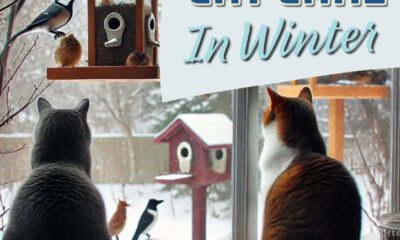
 Cat Behavior4 months ago
Cat Behavior4 months agoGreater Cat Winter Care: Non -Cold Old | Cat wisdom 101 Layla Morgan Wilde
-
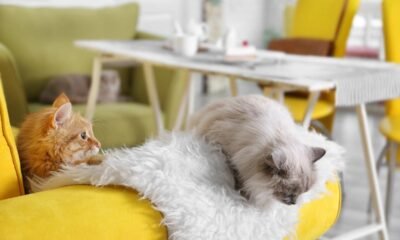
 Cat Behavior4 months ago
Cat Behavior4 months agoThe full guide of Cat Cafes in the United Kingdom
-
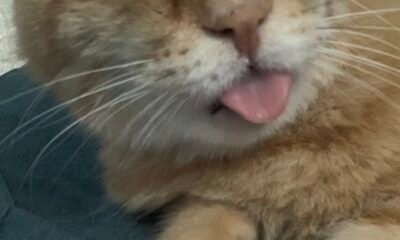
 Cat Facts4 months ago
Cat Facts4 months agoStrange behaviors of explained cats – Cat Behavior Alliance and Carolina Cat Sanctuary
-
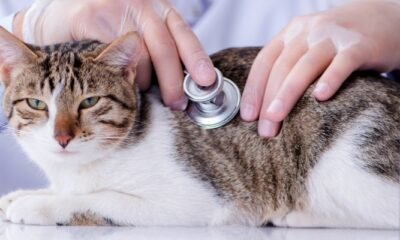
 Cat Facts5 months ago
Cat Facts5 months agoHow Often Do You Take a Cat to the Vet?
-
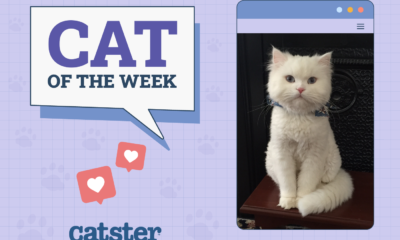
 Cat Facts3 months ago
Cat Facts3 months agoCatster Photo Contest: Winners of the Week of Cats of the Week (March 20, 2025) – Catster
